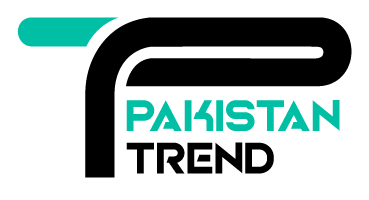A country’s literacy rate indicates the proportion of its population who can read and write.
However, any society’s development depends on its literacy rate. It helps people obtain better jobs and raises their standard of living.
The development of Pakistan is greatly influenced by literacy rates.
When we talk about Pakistan literacy rate, it’s essential to look at how far the country has come since its independence in 1947.
At that time people didn’t care about literacy rate because the country was still being established and majority of the population living in the rural areas.
After some time, progress has been made. Let’s take a closer look through history.
Pakistan’s education system was roughly structured, with minimal funding and resources allocated to it in the early years.
So, they inherited an education system from British rule. It was also not intended to meet the requirements of a newly formed nation.
With time, many educational policies were introduced which increase the literacy rate for example five year plans in the 1950s and 1960s.
These plans enable the primary and secondary education to expand, but the instability of economy the progress is slow.
In the 1990s, Pakistan address its literacy problems. In 1998, the National Education Policy was introduced.
The purpose of this policy is to improve the literacy rate by increase the number of schools in rural areas as well as focus on primary education.
However, there was a noticeable increase in the literacy rate at this time.
In the 2000s, a literacy program named “the Millennium Development Goals (MDGs)” was introduced.
This program pushed Pakistan to make more changes. As the country progress, some challenges remained to meet the goal such as cultural differences, poor infrastructure, and lack of money.
In 2024, Pakistan literacy rate is almost 62%.
Now, we discuss the current literacy rate and observe a number of factors that may be influencing it, including local and gender variations, obstacles, and government initiatives.
Current Literacy Rate in Pakistan (2024)
According to a recent report, Pakistan’s literacy rate would be close to 62%.
This indicates that sixty-two out of a hundred Pakistanis are literate. Even though Pakistan’s literacy rate has improved recently, it is still lower than that of many other nations worldwide.
Pakistan’s population is expanding rapidly, making it more difficult for the government to raise the country’s literacy rate quickly.
However, Pakistan’s literacy rate still need to more development despite some recent improvements.
The rate of literacy has increased more quickly in countries like Bangladesh and India.
This implies that measures to increase the country’s total literacy percentage are increasing even as Pakistan improves.
Urban vs. Rural Literacy Rates

Male vs. Female Literacy Rates

Provincial Literacy Rates
Here are the literacy rates by province:

Global Comparison
| Country | Literacy Rate | Factors Contributing to Literacy Rate |
| Sri Lanka | 90% | Strong investment in education, stable political environment |
| India | 80% | Significant progress due to government initiatives, focus on mass education |
| Pakistan | 60% | Political instability, underinvestment in education, socio-cultural challenges |
Gender Disparities in Education
According to the Global Gender Gap Index 2022, Pakistan ranks second to last in terms of the Gender Gap, with only 56.4% of its gender gap closed, a 0.8 percentage point increase from 2021.
By percentage, men form about 51.46% and women form about 48.54% of the total population of Pakistan.
The disparity in literacy rates between men and women is one of Pakistan’s most serious issues.
The most recent data shows that men have a higher literacy rate than women. In Pakistan, seventy-two percent of men and, more importantly, fifty-two percent of women are literate. This discrepancy suggests a significant educational gender gap.
The factors behind this gender disparity include:
- Early marriages
- Cultural traditions
- Girls’ access to education is restricted, particularly in rural areas.
There are still many families that feel that boys should have greater access to school than girls.
As a result, women’s literacy rates are lower in Pakistan.
Although there is still more work to be done, efforts are being made to close this gap.
It will be challenging to considerably raise Pakistan’s general literacy rate if males and girls do not have equal access to education.
Regional Disparities
There are prominent regional variations in Pakistan’s literacy rate as well.
Compared to rural areas, cities like Islamabad, Karachi, and Lahore have substantially higher rates of literacy.
The loss of universities, educators, and scholarly resources in far less developed places is mostly to blame for this close disparity.
Access to universities, colleges, and schools is better for residents of urban regions.
However, many kids no longer attend nearby schools in rural and distant places, or if they do, the quality of their education is not good.
This is one of the reasons Pakistan has lower literacy rates in such areas.Enhancing the literacy rate in Pakistan will necessitate concentrating on underprivileged regions and guaranteeing that educational resources, instructors, and classrooms are accessible to all, irrespective of residence.
Major Challenges to Achieving Higher Literacy Rate in Pakistan
Here are some major challenges which affect Pakistan’s literacy rate:
Limited Schools in Rural Areas of Pakistan
In Pakistan’s rural areas, schools are frequently a considerable distance away, and transportation is a major issue.
However, families won’t have the money to send their children to far-off universities, which will diminish the rate of literacy in Pakistan and other areas.
Cultural Differences
In Pakistan, traditional beliefs and cultural traditions often act as obstacles to education.
Families in a lot of places think that females should stay home from school. Pakistan’s high percentage of illiteracy, particularly among women, is a result of this cultural notion. Improving literacy requires a shift in these attitudes.
Poverty
One of the most significant external factors influencing Pakistan’s literacy rate is poverty.
Many families find it too expensive to send their kids to school, particularly those who live in rural areas. Rather, children often work to support their families financially, which prevents them from attending school.
Early Marriages
Girls are married off at an early age in some areas of Pakistan, which prevents them from going to school.
Girls who marry young are forced to drop out of school and concentrate on taking care of the family.
How NGOs and International Organizations Enhancing Literacy Rate in Pakistan
One of the biggest challenges to endorsing changes and growing the education system in Pakistan is the country’s political and economic instability.
To improve the terrible state of educational conditions, the politically and economically challenged society needs to take major action.
However, NGOs and international organizations (IOs) are actively tackling the educational problem and coming up with measures to lessen the detrimental impacts of illiteracy in such difficult circumstances.
These IOs and NGOs are significantly assisting Pakistan’s educational system by launching initiatives centered on high-quality education, community involvement, and skill development.
These organizations are not only striving to upgrade the standard of education but are also significantly influencing educational policies.
Numerous NGOs are working to improve education in Pakistan:
- The Citizens Foundation
- Akhuwat Foundation
- Idara-e-Taleem-o-Aagahi
- Zindagi Trust
- HOPE
- RB Welfare Organisation
- The Noor Project, and Indus Resource Center.
For example, The Citizens Foundation (TCF) operates over 1,800 schools, providing education to nearly 280,000 students in rural areas and urban slums across Pakistan.
Wrap Up
Pakistan’s literacy rate needs to improve in rural areas as well as girls.
However, higher literacy rates improve social conditions as well as financial gains.
So, People are able to make better decisions for their general well-being, family planning, and health. Moreover, the country can provide a better future for all of its citizens with a higher literacy rate.



